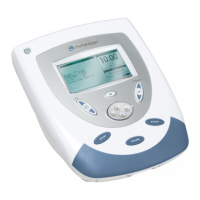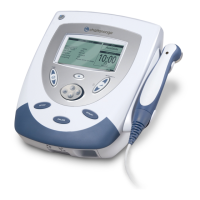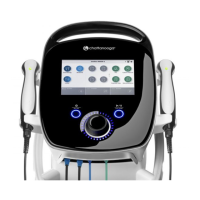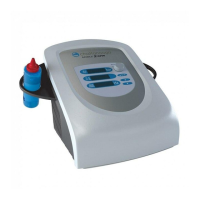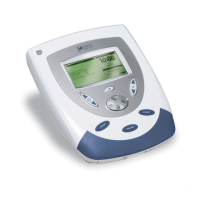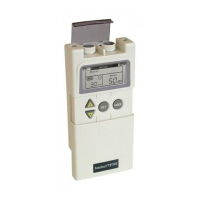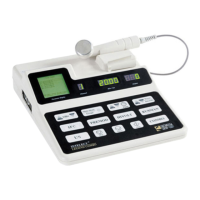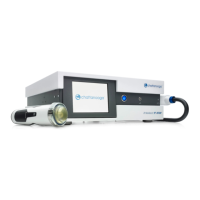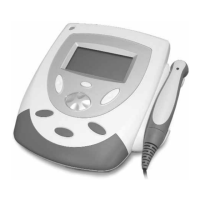APPENDIX
EN
|
Intelect
®
Mobile 2 ELECTROTHERAPY User Manual
ELECTROMAGNETIC COMPATIBILITY
EMC
The Intelect
®
Mobile has been tested and found to comply
with the electromagnetic compatibility (EMC) limits for
medical devices to
IEC --. These limits are designed to provide
reasonable protection against harmful interference in a
typical medical installation.
The guidelines below are intended to help promote
electromagnetic compatibility (EMC) in the identified use
environment for the Intelect
®
Mobile .
• Make use of available resources such as EMC
professionals and publications and Internet web
pages on the subject of medical device EMC;
• Assess the electromagnetic environment of the
facility (e.g., identify radio transmitters in around
the facility) and identify areas where critical medical
devices are used;
• Manage the electromagnetic environment, RF
transmitters and all electrical and electronic
equipment, including medical devices, to reduce the
risk of medical device electromagnetic interference
(EMI) and achieve EMC;
• Coordinate the purchase, installation, service,
and management of all electrical and electronic
equipment used in the facility to achieve EMC;
• Educate healthcare facility sta, contractors, visitors,
and patients about EMC and EMI and how they can
recognize medical device EMI and help minimize
associated risks;
• Establish and implement written policies and
procedures that document the intentions and
methods of the healthcare institution for reducing
the risk of medical device EMI and achieving EMC;
• Report EMI problems to the US FDA MedWatch
program and communicate EMI/EMC experiences to
colleagues in open forums such as medical/technical
publications and conferences.
More information is contained within a comprehensive
guidance document for EMC in healthcare facilities,
developed, with FDA participation, by the Association for the
Advancement of Medical Instrumentation (AAMI): Technical
Information Report (TIR) , Guidance on Electromagnetic
Compatibility of Medical Devices
for Clinical/Biomedical Engineers. AAMI TIR -.
Arlington, Virginia: Association for the Advancement of
Medical Instrumentation; .
Caution:
Medical electrical equipment requires special precautions
regarding EMC and must be installed and operated
according to these instructions. It is possible that
high levels of radiated or conducted radio-frequency
electromagnetic interference (EMI) from portable and
mobile RF communications equipment or other
strong or nearby radio-frequency sources, could result in
performance disruption of the ultrasound system.
Evidence of disruption may include image degradation or
distortion, erratic readings, equipment ceasing to operate, or
other incorrect functioning. If this occurs, survey
the site of disruption, and take the following actions to
eliminate the source(s).
• Turn equipment in the vicinity o and on to isolate
disruptive equipment.
• Relocate or re-orient interfering equipment.
• Increase distance between interfering equipment and
your ultrasound system.
• Manage use of frequencies close to ultrasound
system frequencies.
• Remove devices that are highly susceptible to EMI.
• Lower power from internal sources within the facility
control (such as paging systems).
• Label devices susceptible to EMI.
• Educate clinical sta to recognize potential EMI-
related problems.
• Eliminate or reduce EMI with technical solutions
(such as shielding).
• Restrict use of personal communicators (cell phones,
computers) in areas with devices susceptible to EMI.
• Share relevant EMI information with others,
particularly when evaluating new equipment
purchases which may generate EMI.
• Purchase medical devices that comply with IEC
- - EMC Standards (V/meter EMI immunity,
limit interference level to . V/meter).
